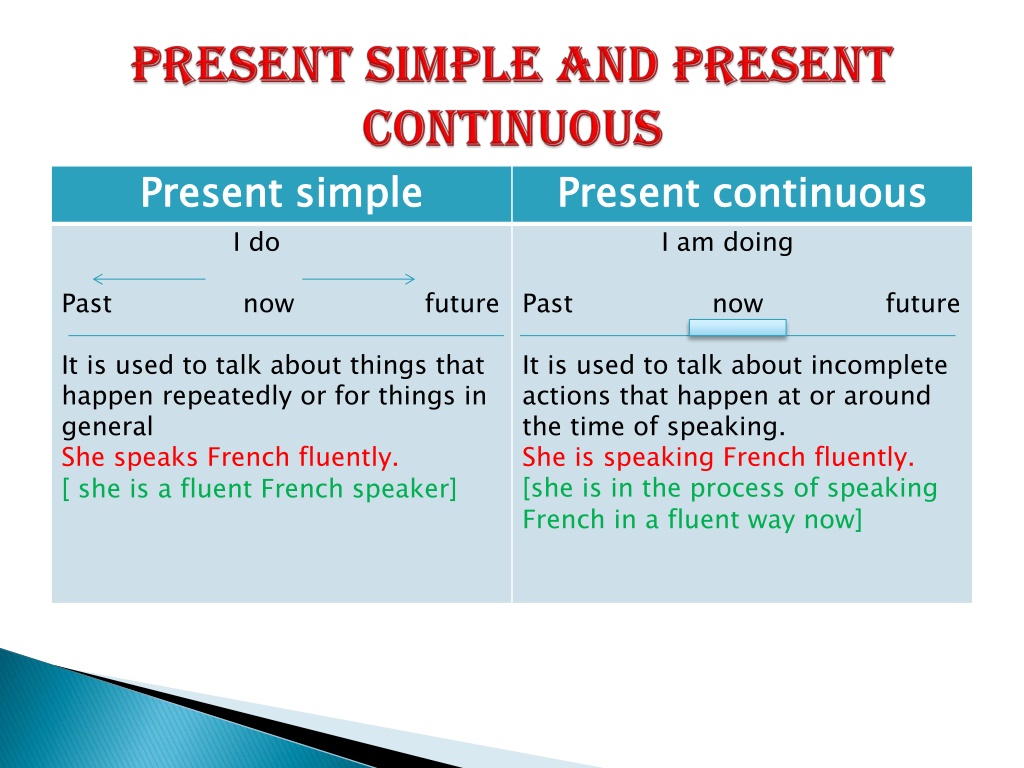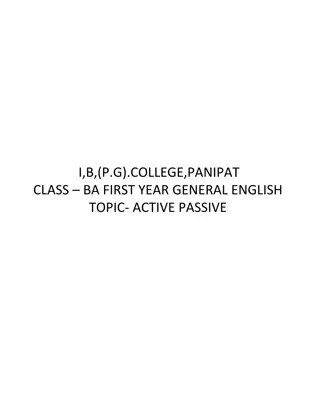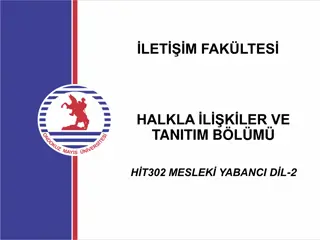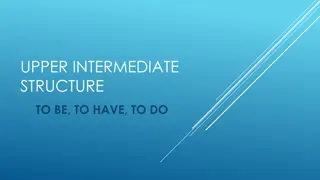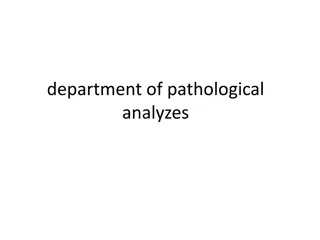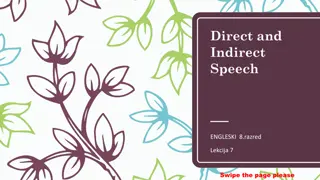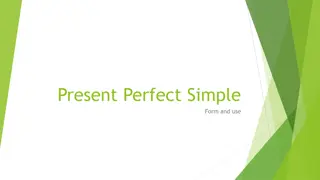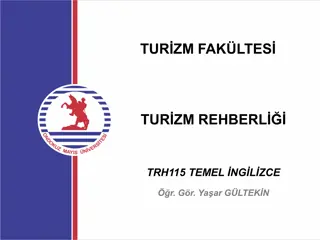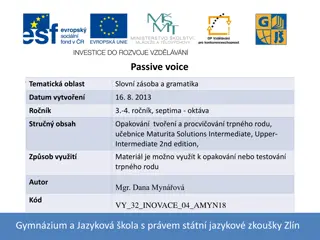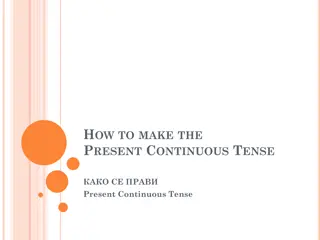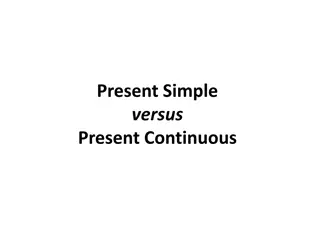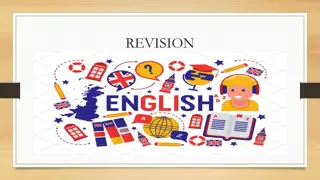Present Simple and Continuous Usage
This content explains the usage of present simple and present continuous tenses in English grammar. It covers how these tenses are used for repeated actions, general truths, incomplete actions, permanent and temporary situations, future time expressions, and more. Examples and visuals are provided to enhance comprehension of these grammar concepts.
Download Presentation

Please find below an Image/Link to download the presentation.
The content on the website is provided AS IS for your information and personal use only. It may not be sold, licensed, or shared on other websites without obtaining consent from the author.If you encounter any issues during the download, it is possible that the publisher has removed the file from their server.
You are allowed to download the files provided on this website for personal or commercial use, subject to the condition that they are used lawfully. All files are the property of their respective owners.
The content on the website is provided AS IS for your information and personal use only. It may not be sold, licensed, or shared on other websites without obtaining consent from the author.
E N D
Presentation Transcript
Present simple I do Present simple Present Present continuous I am doing continuous Past now future Past now future It is used to talk about things that happen repeatedly or for things in general She speaks French fluently. [ she is a fluent French speaker] It is used to talk about incomplete actions that happen at or around the time of speaking. She is speaking French fluently. [she is in the process of speaking French in a fluent way now]
It is used for permanent situations It is used for temporary situations She learns new languages quickly. She is learning a new language. [she has the ability to learn new languages quickly] [she is learning a new language at the time of speaking]
Always Always is used with the present simple to indicate that an action is repeated all the time. Always Always is used with the present continuous to indicate that something is repeated more often than usual, it indicates an annoying habit. He always loses his keys. He is always losing his keys. [ he loses his keys all the time] [ he loses his keys more often than usual]
Future time expressed by present simple and present continuous The present simple The present simple The present continuous The present continuous We use the present simple to talk about future actions that are fixed such as time tables or schedules. We use the present continuous to talk about personal arrangements The bank doors open at 8 am. The match starts at 3 pm. The lesson begins soon. Susan is meting me for lunch later. I am taking a day off on Sunday. Next week, my sister is coming.
